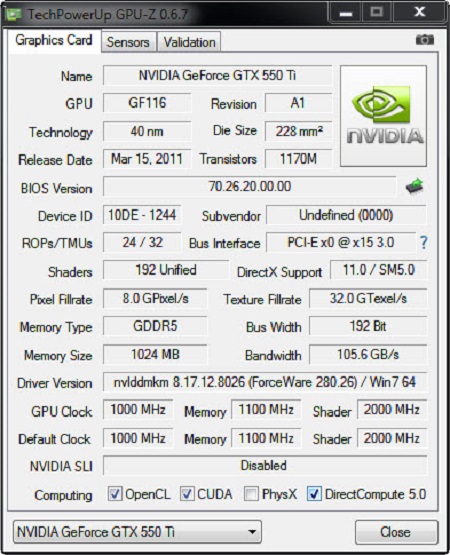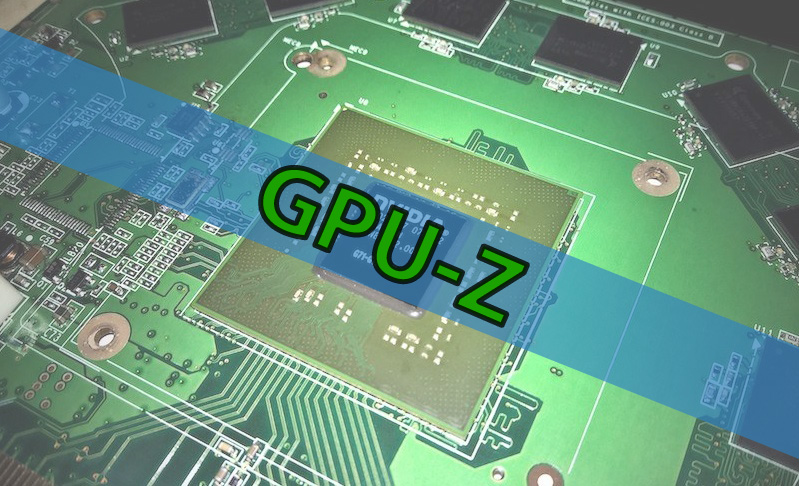TechPowerUp’s free, lightweight GPU-Z program monitors and retrieves GPU data accurately and reliably. GPU-Z displays GPU model, characteristics, temperature, clock speeds, and more for NVIDIA and AMD graphics cards. Its simple UI and real-time monitoring make it useful for gamers, amateurs, and professionals.

Vital Considerations
PC gaming, bitcoin mining, and professional graphics require GPU expertise and optimization. GPU-Z, a lightweight yet powerful utility, provides GPU specifications, performance metrics, and real-time monitoring.
Usefulness of GPU-Z
Some important benefits of using the GPU-Z are as follows:
- Comprehensive Hardware Information: GPU-Z shows users their GPU’s model, architecture, manufacturing process, memory type and size, and more. This plethora of knowledge helps users understand GPU capabilities and limits.
- Real-time Monitoring: GPU-Z’s real-time monitoring lets users track GPU metrics like temperature, GPU utilization, clock speeds, fan speeds, and power consumption. Real-time feedback helps users find performance bottlenecks, monitor thermal performance, and optimize system stability.
- **Validation and Benchmarking**: GPU-Z lets users validate their GPUs and compare their performance to reference specifications. This functionality helps enthusiasts and overclockers push their GPUs to the maximum while maintaining stability and reliability.
- Custom Sensors and Logging: GPU-Z lets users customize sensors and logging profiles to monitor GPU data. Users can focus on VRM temperatures, memory utilization, or GPU power consumption by customizing their monitoring arrangement.
- Cross-platform Compatibility: GPU-Z works with NVIDIA and AMD graphics cards, making it useful for users with different GPU configurations. GPU-Z delivers consistent monitoring and information retrieval across hardware platforms, whether gaming on GeForce or mining on Radeon.
The GPU-Z community is busy and energetic, including forums, online groups, and support channels for help, tips, and GPU discussions.
Advanced Features and Functions
GPU-Z is essential for monitoring, analysing, and optimising graphics processing devices.
- GPU BIOS Reading: GPU-Z lets users read and analyze their graphics cards’ BIOS. This function lets expert users alter their GPU’s firmware for performance or compatibility by revealing BIOS version, memory timings, and other options.
- Vulkan and DirectX Support: GPU-Z supports Vulkan and DirectX, two major graphics APIs for gaming and professional applications. GPU use, memory usage, and other API-specific performance indicators can be monitored to assess GPU performance during gaming and rendering.
- GPU-Z may log and export sensor data for analysis in addition to real-time monitoring. Users can log GPU temperatures, clock speeds, and other parameters for extensive performance monitoring and troubleshooting.
- Multi-GPU Support: GPU-Z monitors and retrieves data for SLI (NVIDIA) and CrossFire (AMD) systems. Users can monitor GPU statistics or aggregate data from all GPUs to get a holistic view of multi-GPU system performance.
- Customizable Interface: GPU-Z lets users customize the layout, colors, and presented information. The GPU-Z interface can be customized for temperature monitoring or clock speed analysis.
Conclusion
Users who want to understand, monitor, and optimize GPU performance need GPU-Z. GPU-Z helps gamers, enthusiasts, and professionals choose GPU setups with its comprehensive hardware information, real-time monitoring, and cross-platform interoperability. GPU-Z gives the information and monitoring tools needed to maximize your graphics processing unit’s capabilities for gaming, overclocking, mining, or authenticity verification.
GPU-Z helps users optimize GPU configurations for gaming, rendering, mining, and other GPU-intensive applications with its complete hardware information, real-time monitoring, advanced features, and active community assistance. GPU-Z gives gamers, enthusiasts, and professionals the knowledge and tools they need to maximize their GPU’s performance and improve their computing experience.


Comments
Audra
Brandon George